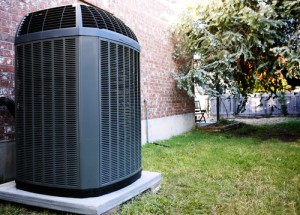 What Makes My Air Conditioner Produce Cold Air?
What Makes My Air Conditioner Produce Cold Air?
Air conditioning basics rely on simple facts usually learned during first-year chemistry. In order to produce cooling, an air conditioner must convert a chemical from its gaseous state into a liquid state, and vice versa. These changes allow the A/C unit to take heat from inside the home and transfer it to the outdoor environment.
A/C units consist of three major components: A compressor and a condenser, which are usually located on the portion of the unit that is outside the home, and an evaporator, which is located inside. A closed loop inside the system transfers a chemical refrigerant through these three components.
When the chemical reaches the compressor, it is in a low-pressure gaseous state. The compressor, as its name suggests, applies pressure to the chemical, causing molecules to move closer together. This process raises the temperature of the gas as well as its pressure. The chemical then enters the condenser, the portion of the air conditioner that causes heat to dissipate so much that the chemical changes again and becomes a high-pressure liquid instead of a gas.
The last sequence in the loop involves the evaporator — this is where cooling truly takes place. Inside the evaporator, the pressure of the liquid drops and the chemical changes back into a gas. This process of evaporation requires heat, just as when you boil a kettle to produce steam you must add a heat source to the system. The heat in this case, however, is drawn from the air inside the home. The result is cooled air, which is then blown back into the house by a fan.
When leaving the evaporator, the chemical is once again in a low-pressure, gaseous state, and it’s ready to cycle through the three stages again.
For more expert advice about air conditioning basics, selecting an A/C system that is right for your home or any other home comfort issues, please contact T.F. O’Brien Cooling & Heating.
Our goal is to help educate our customers about energy and home comfort issues (specific to HVAC systems). For more information about other HVAC topics, download our free Home Comfort Resource guide.
